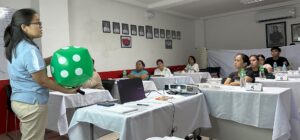| DA Sec believes Filipino farmers can be more productive and competitive with the right public and private sector support |
Makati City, Philippines – By 2017, the domestic rice market could be flooded with imports from other ASEAN countries. Under the ASEAN Integration 2015, the region will be transformed into a single market. There will be free movement of goods, services, investment, skilled labor, and capital among ASEAN nations to help the region compete in the global market.
Under the agreement, many industries, including agriculture “shall be open and national treatment granted to investors” both at the pre- and post-establishment stages. Restrictions on imported rice will be gradually lifted over a 5-year term.
This could hurt local rice industries and farmers if measures are not taken to help them become more competitive.
In the Philippines, Nueva Ecija is the gold standard when it comes to the country’s rice production. However, compared to similarly intensively cultivated sites such as Can Tho in Vietnam, Suphan Buri in Thailand, Tamil Nadu in India, Zhe Jiang in China, and West Java in Indonesia, Nueva Ecija still has much room for improvement.
“Aside from being in the list of top ten rice-producing countries in the world, the selected sites have more or less similar climatic conditions,” explained Piedad Moya, co-project leader of a study on Philippine rice economy relative to its neighboring countries. “All of them are irrigated, and can plant at least two rice crops a year.”
The study, Benchmarking Philippine rice economy relative to major rice-producing countries in Asia, is funded by the Department of Agriculture (DA), and undertaken in close collaboration with the Philippine Rice Research Institute (PhilRice), and the International Rice Research Institute (IRRI).
Although production costs in Nueva Ecija may be lower (Php12.41) than other rice importers, such as China (Php14.07) and Indonesia (Php15.77), it is still significantly higher compared with exporters such as India (Php8.87), Thailand (Php9.46), or Vietnam (Php6.53) per kilogram of dry paddy.
The high cost of producing a kilogram of paddy in Nueva Ecija is due to the huge labor requirement during manual transplanting (25 man-days) and harvesting or threshing (21 man-days). Vietnam, on the other hand, which has the lowest production cost, uses direct seeding (2 man-days) and combine harvesters (2 man-days) resulting in increased productivity and higher efficiency.
The study also noted higher milling efficiency in almost all rice-exporting countries that leads to fewer broken grains and higher milling recovery. This is attributed to rice varieties that have similar grain shape and length. Moreover, farmers in rice-exporting countries have better bargaining power.
However, experts from PhilRice and IRRI believe that Filipino rice farmers can be more competitive by following suit.
“In the context of the ASEAN economic community, and in anticipation of the free flow of goods among member countries, enhancing competitiveness cannot be just a soundbite,” DA Secretary Proceso Alcala remarked. “We must translate competitiveness into practical interventions that lead to the capacity of farmers to compete and expand their engagement in agribusiness opportunities.”
Madonna Casimero, senior scientist and IRRI’s Philippine research and development coordinator, agrees.
“As the Honorable Secretary stated, the Filipino farmer is at the center of the Food Staples Sufficiency Program (FSSP),” she said. “Hence, IRRI and the DA are implementing seven flagship FSSP initiatives, including the benchmarking study, aimed at helping our Filipino farmers.”
The 3rd research seminar of the Benchmarking Philippine rice economy relative to major rice-producing countries in Asia was held in Makati City on 03 December.
~
Learn more about IRRI (www.irri.org) or follow us on social media and networks (all links down the right column).









